Stephan Krusche
From Coders to Critics: Empowering Students through Peer Assessment in the Age of AI Copilots
May 28, 2025Abstract:The rapid adoption of AI powered coding assistants like ChatGPT and other coding copilots is transforming programming education, raising questions about assessment practices, academic integrity, and skill development. As educators seek alternatives to traditional grading methods susceptible to AI enabled plagiarism, structured peer assessment could be a promising strategy. This paper presents an empirical study of a rubric based, anonymized peer review process implemented in a large introductory programming course. Students evaluated each other's final projects (2D game), and their assessments were compared to instructor grades using correlation, mean absolute error, and root mean square error (RMSE). Additionally, reflective surveys from 47 teams captured student perceptions of fairness, grading behavior, and preferences regarding grade aggregation. Results show that peer review can approximate instructor evaluation with moderate accuracy and foster student engagement, evaluative thinking, and interest in providing good feedback to their peers. We discuss these findings for designing scalable, trustworthy peer assessment systems to face the age of AI assisted coding.
Adaptive Semantic Prompt Caching with VectorQ
Feb 06, 2025Abstract:Semantic prompt caches reduce the latency and cost of large language model (LLM) inference by reusing cached LLM-generated responses for semantically similar prompts. Vector similarity metrics assign a numerical score to quantify the similarity between an embedded prompt and its nearest neighbor in the cache. Existing systems rely on a static threshold to classify whether the similarity score is sufficiently high to result in a cache hit. We show that this one-size-fits-all threshold is insufficient across different prompts. We propose VectorQ, a framework to learn embedding-specific threshold regions that adapt to the complexity and uncertainty of an embedding. Through evaluations on a combination of four diverse datasets, we show that VectorQ consistently outperforms state-of-the-art systems across all static thresholds, achieving up to 12x increases in cache hit rate and error rate reductions up to 92%.
Dynamic Fog Computing for Enhanced LLM Execution in Medical Applications
Aug 08, 2024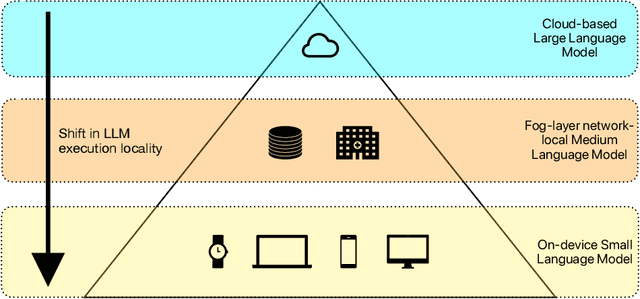

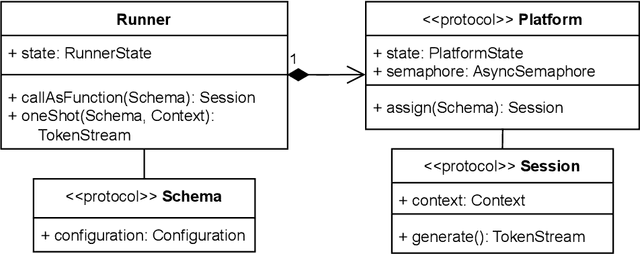
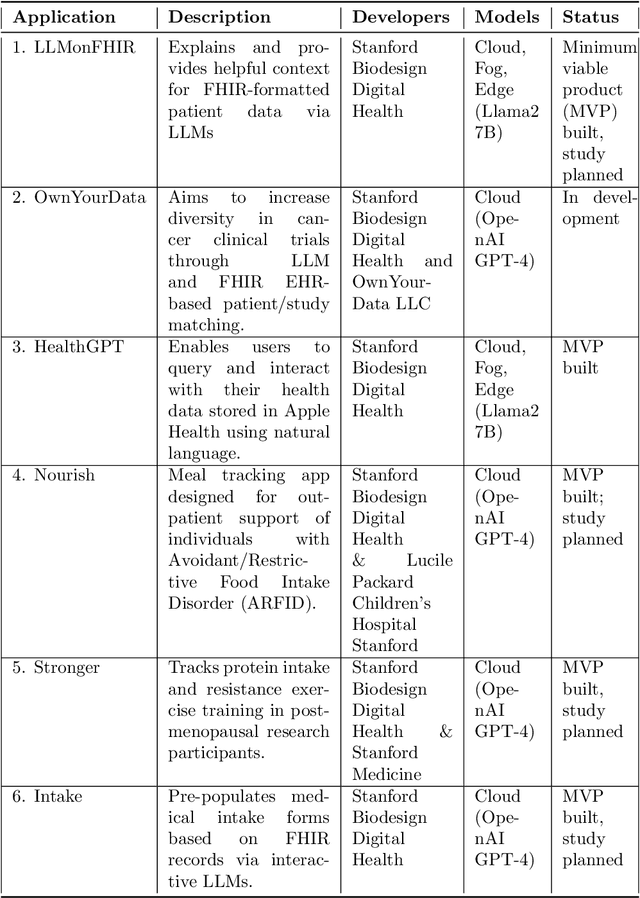
Abstract:The ability of large language models (LLMs) to transform, interpret, and comprehend vast quantities of heterogeneous data presents a significant opportunity to enhance data-driven care delivery. However, the sensitive nature of protected health information (PHI) raises valid concerns about data privacy and trust in remote LLM platforms. In addition, the cost associated with cloud-based artificial intelligence (AI) services continues to impede widespread adoption. To address these challenges, we propose a shift in the LLM execution environment from opaque, centralized cloud providers to a decentralized and dynamic fog computing architecture. By executing open-weight LLMs in more trusted environments, such as the user's edge device or a fog layer within a local network, we aim to mitigate the privacy, trust, and financial challenges associated with cloud-based LLMs. We further present SpeziLLM, an open-source framework designed to facilitate rapid and seamless leveraging of different LLM execution layers and lowering barriers to LLM integration in digital health applications. We demonstrate SpeziLLM's broad applicability across six digital health applications, showcasing its versatility in various healthcare settings.
Interactive Learning in Computer Science Education Supported by a Discord Chatbot
Jul 27, 2024
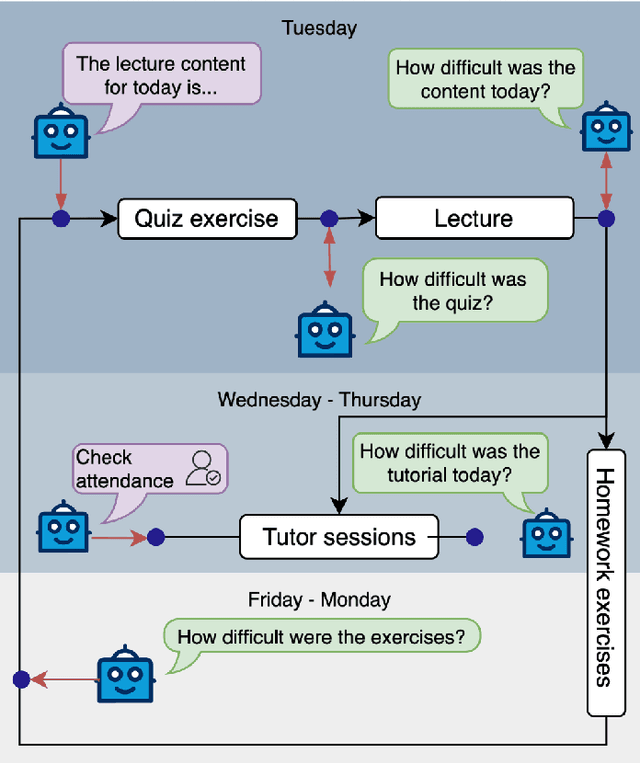


Abstract:Enhancing interaction and feedback collection in a first-semester computer science course poses a significant challenge due to students' diverse needs and engagement levels. To address this issue, we created and integrated a command-based chatbot on the course communication server on Discord. The DiscordBot enables students to provide feedback on course activities through short surveys, such as exercises, quizzes, and lectures, facilitating stress-free communication with instructors. It also supports attendance tracking and introduces lectures before they start. The research demonstrates the effectiveness of the DiscordBot as a communication tool. The ongoing feedback allowed course instructors to dynamically adjust and improve the difficulty level of upcoming activities and promote discussion in subsequent tutor sessions. The data collected reveal that students can accurately perceive the activities' difficulty and expected results, providing insights not possible through traditional end-of-semester surveys. Students reported that interaction with the DiscordBot was easy and expressed a desire to continue using it in future semesters. This responsive approach ensures the course meets the evolving needs of students, thereby enhancing their overall learning experience.
Exploring the Efficacy of Robotic Assistants with ChatGPT and Claude in Enhancing ADHD Therapy: Innovating Treatment Paradigms
Jun 21, 2024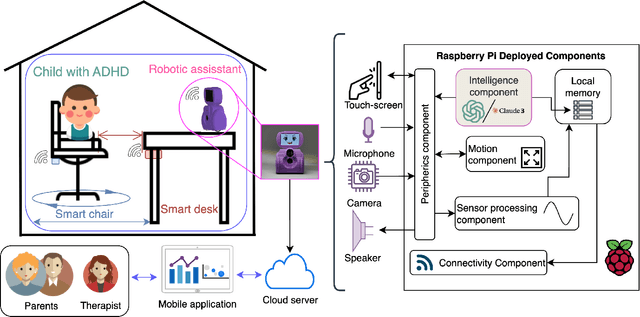

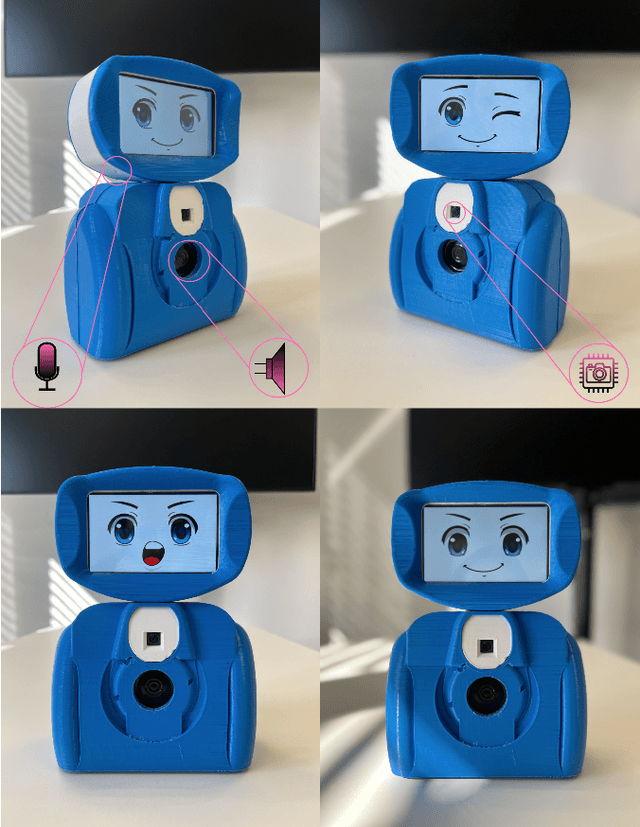

Abstract:Attention Deficit Hyperactivity Disorder (ADHD) is a neurodevelopmental condition characterized by inattention, hyperactivity, and impulsivity, which can significantly impact an individual's daily functioning and quality of life. Occupational therapy plays a crucial role in managing ADHD by fostering the development of skills needed for daily living and enhancing an individual's ability to participate fully in school, home, and social situations. Recent studies highlight the potential of integrating Large Language Models (LLMs) like ChatGPT and Socially Assistive Robots (SAR) to improve psychological treatments. This integration aims to overcome existing limitations in mental health therapy by providing tailored support and adapting to the unique needs of this sensitive group. However, there remains a significant gap in research exploring the combined use of these advanced technologies in ADHD therapy, suggesting an opportunity for novel therapeutic approaches. Thus, we integrated two advanced language models, ChatGPT-4 Turbo and Claude-3 Opus, into a robotic assistant to explore how well each model performs in robot-assisted interactions. Additionally, we have compared their performance in a simulated therapy scenario to gauge their effectiveness against a clinically validated customized model. The results of this study show that ChatGPT-4 Turbo excelled in performance and responsiveness, making it suitable for time-sensitive applications. Claude-3 Opus, on the other hand, showed strengths in understanding, coherence, and ethical considerations, prioritizing safe and engaging interactions. Both models demonstrated innovation and adaptability, but ChatGPT-4 Turbo offered greater ease of integration and broader language support. The selection between them hinges on the specific demands of ADHD therapy.
Iris: An AI-Driven Virtual Tutor For Computer Science Education
May 09, 2024

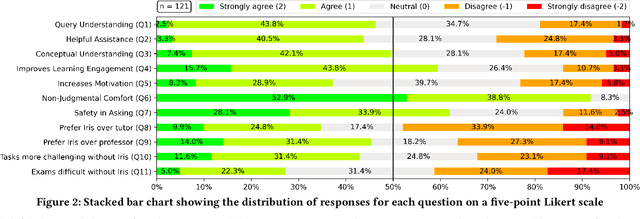
Abstract:Integrating AI-driven tools in higher education is an emerging area with transformative potential. This paper introduces Iris, a chat-based virtual tutor integrated into the interactive learning platform Artemis that offers personalized, context-aware assistance in large-scale educational settings. Iris supports computer science students by guiding them through programming exercises and is designed to act as a tutor in a didactically meaningful way. Its calibrated assistance avoids revealing complete solutions, offering subtle hints or counter-questions to foster independent problem-solving skills. For each question, it issues multiple prompts in a Chain-of-Thought to GPT-3.5-Turbo. The prompts include a tutor role description and examples of meaningful answers through few-shot learning. Iris employs contextual awareness by accessing the problem statement, student code, and automated feedback to provide tailored advice. An empirical evaluation shows that students perceive Iris as effective because it understands their questions, provides relevant support, and contributes to the learning process. While students consider Iris a valuable tool for programming exercises and homework, they also feel confident solving programming tasks in computer-based exams without Iris. The findings underscore students' appreciation for Iris' immediate and personalized support, though students predominantly view it as a complement to, rather than a replacement for, human tutors. Nevertheless, Iris creates a space for students to ask questions without being judged by others.
AI-Tutoring in Software Engineering Education
Apr 05, 2024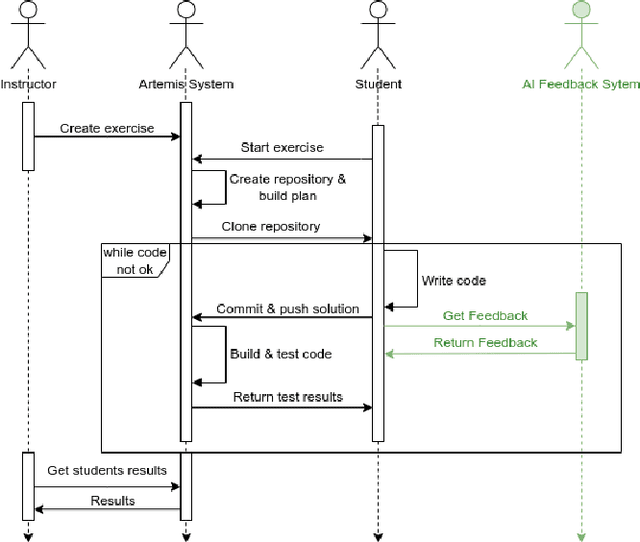
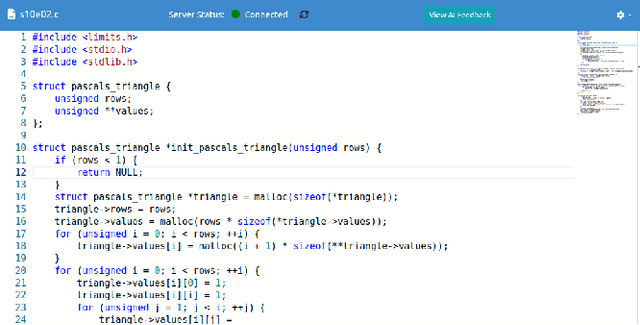
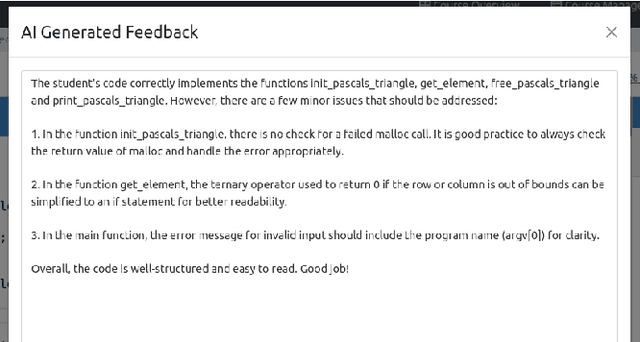
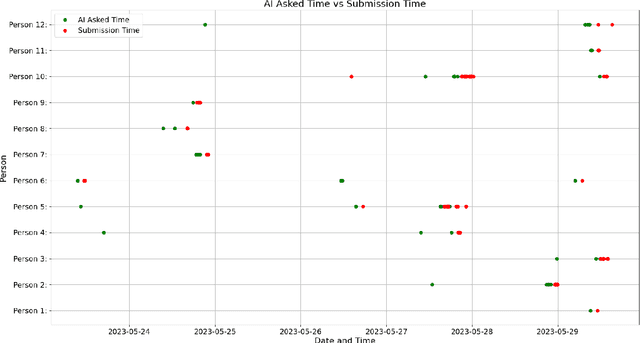
Abstract:With the rapid advancement of artificial intelligence (AI) in various domains, the education sector is set for transformation. The potential of AI-driven tools in enhancing the learning experience, especially in programming, is immense. However, the scientific evaluation of Large Language Models (LLMs) used in Automated Programming Assessment Systems (APASs) as an AI-Tutor remains largely unexplored. Therefore, there is a need to understand how students interact with such AI-Tutors and to analyze their experiences. In this paper, we conducted an exploratory case study by integrating the GPT-3.5-Turbo model as an AI-Tutor within the APAS Artemis. Through a combination of empirical data collection and an exploratory survey, we identified different user types based on their interaction patterns with the AI-Tutor. Additionally, the findings highlight advantages, such as timely feedback and scalability. However, challenges like generic responses and students' concerns about a learning progress inhibition when using the AI-Tutor were also evident. This research adds to the discourse on AI's role in education.
ChatGPT-4 as a Tool for Reviewing Academic Books in Spanish
Sep 20, 2023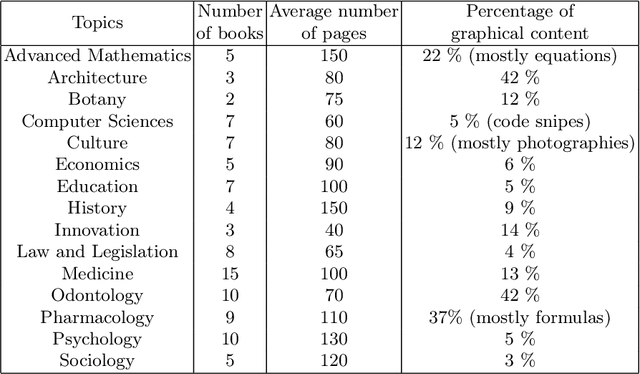
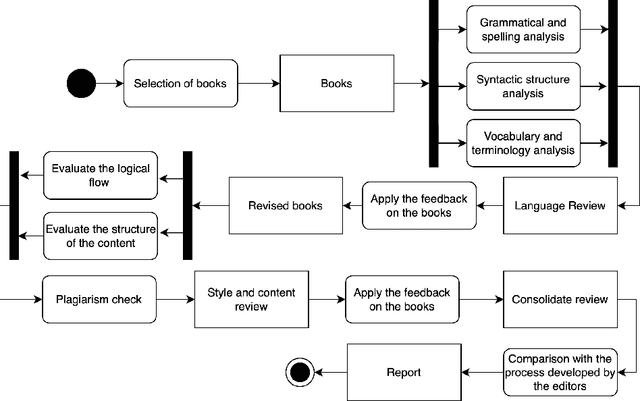
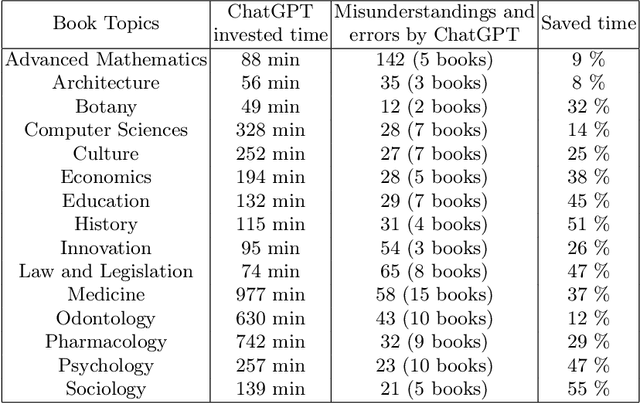
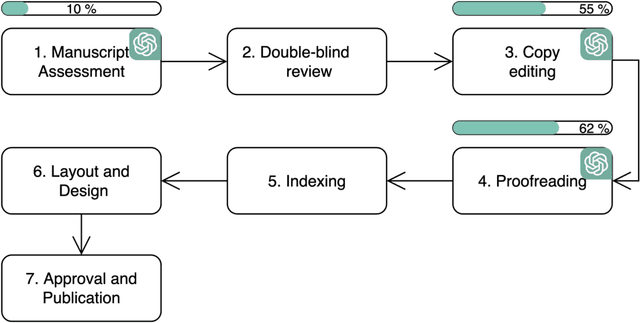
Abstract:This study evaluates the potential of ChatGPT-4, an artificial intelligence language model developed by OpenAI, as an editing tool for Spanish literary and academic books. The need for efficient and accessible reviewing and editing processes in the publishing industry has driven the search for automated solutions. ChatGPT-4, being one of the most advanced language models, offers notable capabilities in text comprehension and generation. In this study, the features and capabilities of ChatGPT-4 are analyzed in terms of grammatical correction, stylistic coherence, and linguistic enrichment of texts in Spanish. Tests were conducted with 100 literary and academic texts, where the edits made by ChatGPT-4 were compared to those made by expert human reviewers and editors. The results show that while ChatGPT-4 is capable of making grammatical and orthographic corrections with high accuracy and in a very short time, it still faces challenges in areas such as context sensitivity, bibliometric analysis, deep contextual understanding, and interaction with visual content like graphs and tables. However, it is observed that collaboration between ChatGPT-4 and human reviewers and editors can be a promising strategy for improving efficiency without compromising quality. Furthermore, the authors consider that ChatGPT-4 represents a valuable tool in the editing process, but its use should be complementary to the work of human editors to ensure high-caliber editing in Spanish literary and academic books.
An Analysis of Programming Course Evaluations Before and After the Introduction of an Autograder
Oct 28, 2021
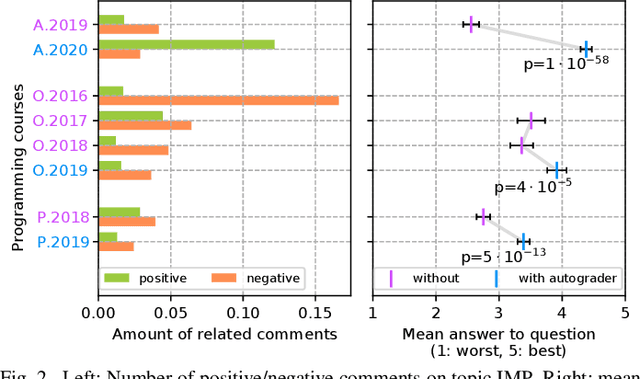
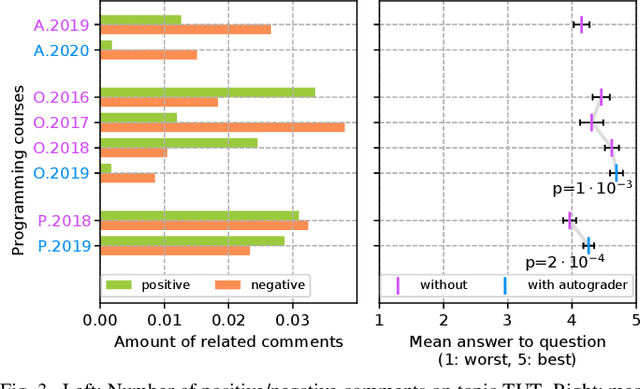
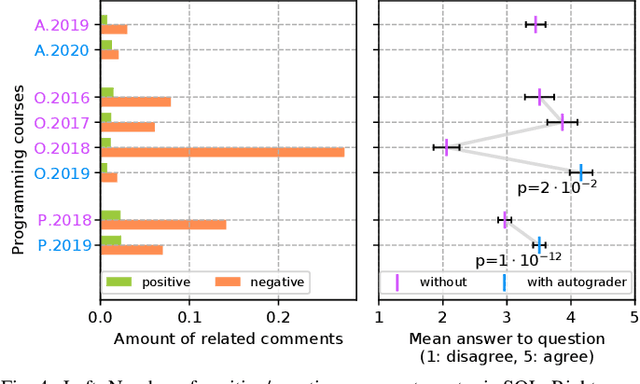
Abstract:Commonly, introductory programming courses in higher education institutions have hundreds of participating students eager to learn to program. The manual effort for reviewing the submitted source code and for providing feedback can no longer be managed. Manually reviewing the submitted homework can be subjective and unfair, particularly if many tutors are responsible for grading. Different autograders can help in this situation; however, there is a lack of knowledge about how autograders can impact students' overall perception of programming classes and teaching. This is relevant for course organizers and institutions to keep their programming courses attractive while coping with increasing students. This paper studies the answers to the standardized university evaluation questionnaires of multiple large-scale foundational computer science courses which recently introduced autograding. The differences before and after this intervention are analyzed. By incorporating additional observations, we hypothesize how the autograder might have contributed to the significant changes in the data, such as, improved interactions between tutors and students, improved overall course quality, improved learning success, increased time spent, and reduced difficulty. This qualitative study aims to provide hypotheses for future research to define and conduct quantitative surveys and data analysis. The autograder technology can be validated as a teaching method to improve student satisfaction with programming courses.
* Accepted full paper article on IEEE ITHET 2021
 Add to Chrome
Add to Chrome Add to Firefox
Add to Firefox Add to Edge
Add to Edge